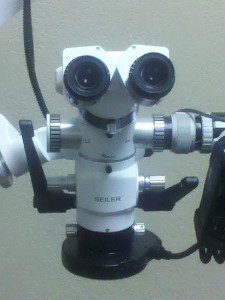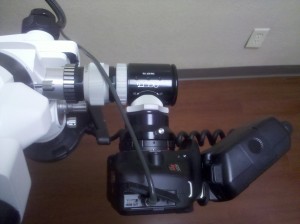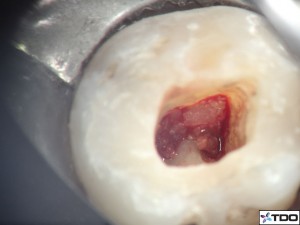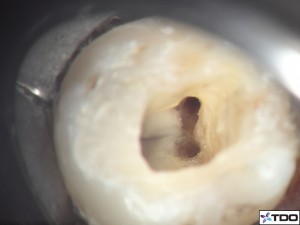The dental operating microscope is indispensable in the practice of modern endodontics. It is a central part of my practice and is gaining in popularity with both specialists and general dentists. Popular brands include Seiler, Zeiss, Global and Kaps. I use Seiler Precision Microscopes in my practice. Specifically, the XR6 Evolution is my microscope of choice. I would be remiss in not thanking Dr. Gary Carr and the other early microscope enthusiasts for their contributions and commitment to establishing the importance of microscopy in endodontics.
I want to discuss two major benefits of using the microscope. The first is an increased ability to visualize the internal aspect of the tooth. The second is improved ergonomics which result in less physical wear and tear as well as decreasing operator fatigue. There are additional benefits as well, but these are two upon which I would like to focus.
Increased visualization is a much bigger deal than it sounds like. If used properly, the use of the dental microscope can completely alter the means by which endodontics is performed. Before the use of the dental microscope, our specialty relied on tactile stimuli and “triangulation”, using external landmarks, measurements and known canals to locate other canals by what now appear to be gross techniques. As this was our only means of delivering care, many patients received adequate treatment. I personally performed molar endodontics for nine years prior to being introduced to the microscope. I used loupes, and then added a headlight. I believe that I did a good job, although I believe the microscope has elevated my abilities.
I have seen the advice given that the operating microscope be used direct on the lower arch. While this may seem easier to the operator, you are giving away the ability to visualize and use the changes in color and texture that are visually apparent inside the tooth. This visualization provides the operator the ability to work with a higher degree of precision. This does require a great deal of practice and an expanded skill set to work indirectly throughout the mouth. Most of us have the ability to work indirect on the maxillary arch, but to do so on the lower arch takes a lot of effort. I feel it is worth it.
The improved ergonomics should not be taken for granted. I have a Carr adapter on my scopes which allow me to sit more upright, improving my posture. In addition, I have found that I can work much more easily for long periods of time without tiring. An additional benefit I have not yet had the opportunity to take advantage of is the assistant microscope. This is an additional binocular that can be attached to the beamsplitter on the assistants side. It allows the assistant to see what the operator sees, improving control of the field, as well as ergonomics for the assistant. I hope to have this advancement incorporated into my practice by the end of 2011.
Below you can see the imaging module I have on my microscope- Camera, ringflash and adapter. The microscope is a tremendous tool for clinical documentation.
The photos below were taken in my office a couple of weeks ago. This level of visual detail is something that is not possible without the use of a microscope.



